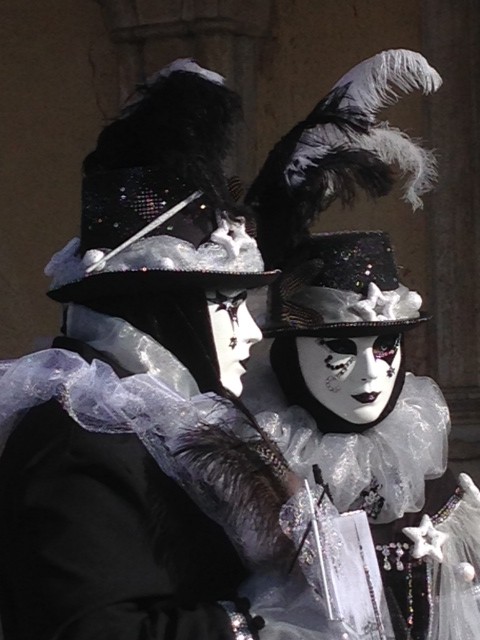
Dear Blog Readers,
Last week I went for four days to Venice to cover the official launch of the Carnival season. For Venetians the Carnival season opens on January 7th after the Feast of the Epiphany. But the official launch of Carnival festivities begins with the Flight of the Angel when a beautiful, young woman is launched from the top of the Bell Tower in St. Mark’s Square on a cable and floats down to a stage in St. Mark’s Square below. This year the Flight of the Angel was on February 7th and my cameraman APTN’s Gigi Navarra and I stood in the square and filmed her plunge.
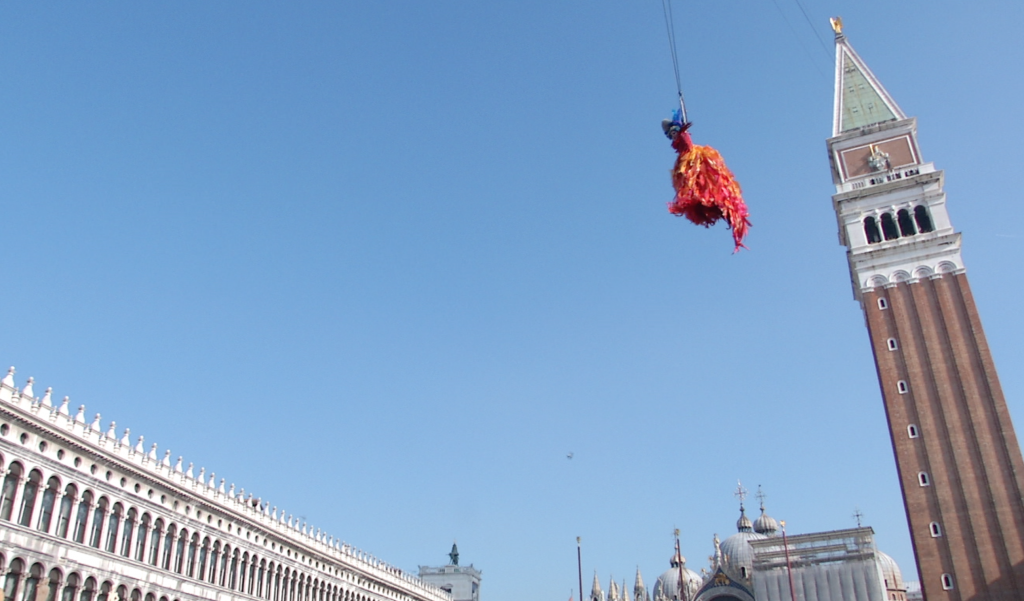
Nineteen-year-old Marianna Serena from the nearby town of Mestre made the descent on a long cable from the nearly 100 meter high tower across the length of the square and down to a stage below as thousands of revelers from around the world stared up at her in awe.
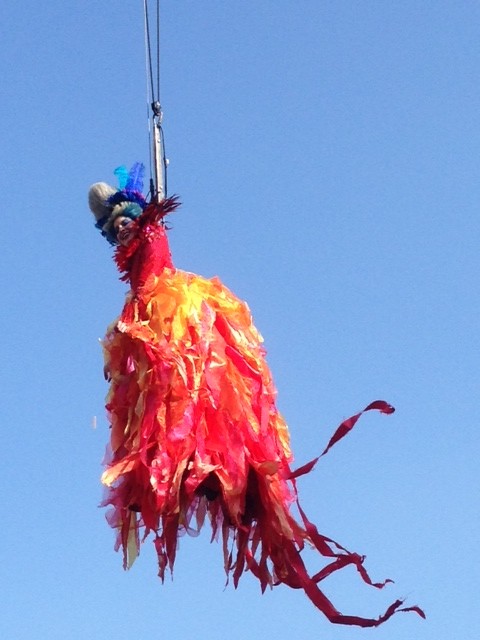
She was wearing a plumed outfit with red, yellow, and orange feathers and silvery leggings symbolizing earth, air, wind and fire. On her head was a blue and white wig.
After she was released from the hook holding her to the cable, Marianna greeted the Doge who was overseeing the ceremony from the stage in St. Mark’s Square. The Doge were the rulers of the Venetian Republic.
(When I sent the photo of the Flying Angel to my daughter Caterina on What’s App she answered saying: “Is that you, Mom?”) I am pretty passionate about my job — but not enough to put on an outfit like that and plummet off the Bell Tower.
The Venetian Carnival is a public party lasting for weeks that leads into the Roman Catholic period of Lent. Its official beginning is two weeks before Ash Wednesday and ends on Fat Tuesday (Mardi Gras – February 17th this year). Interestingly, the Italian version of the word “Carnevale” means “Carne” (meat) “Vale” (counts). In other words, during Carnevale Meat and all other fattening foods are allowed. As soon as Ash Wednesday rolls around meat and sweets should be removed from the diet until Easter.
In the Catholic Church Lent is a period of reflection, repentance, and fasting—so Carnival developed as a last gasp, wild party before the gloomy Lenten period.
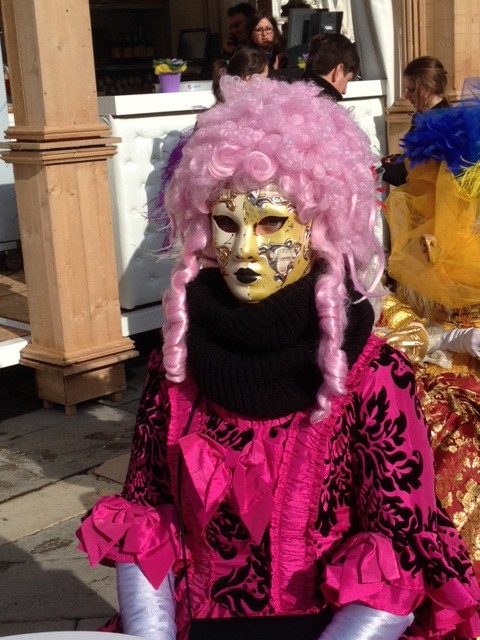
Carnival began in Venice in the 11th century and the Venetians extended the period to roughly two months of festivities. Over the centuries the Venetian carnival attracted nobility from around Europe allowing them to participate in all sorts of fun – both licit and illicit. Princes and Princesses, Dukes and Duchesses could go to lavish masked balls, extravagant banquets, and the city’s brothels and gambling dens allowed for some extra entertainment.
The key to the Venice Carnival though has always been the street –where social divisions were erased. Young and old, rich and poor paraded through the streets in costume enjoying in the festivities. There were street entertainers—jugglers, musicians, acrobats and parades.
The Carnival also gave rich and poor Venetians a chance to make fun of authority or aristocrats without being recognized.
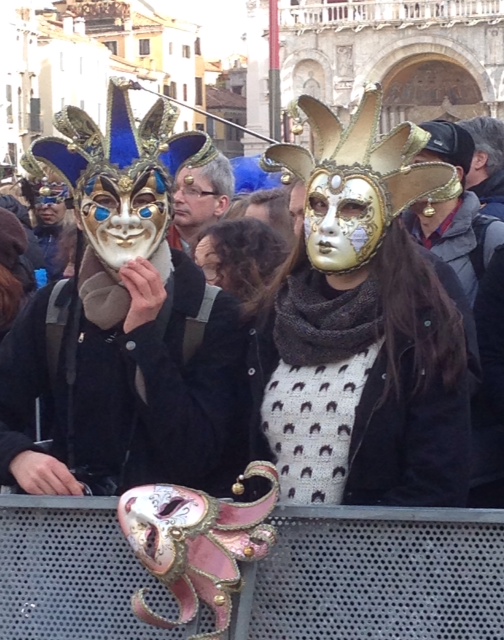
Still today, the Carnival is a party for everyone. There are cheap Made in China masks that one can buy on the street for a few euros, or fabulous, elaborate costumes costing thousands of euros available from exclusive costume makers.
The advantage of being a journalist is that Gigi and I were able to get a taste of both the Carnevale in the Piazza and the extravagant party. On Saturday evening Gigi and I were given permission to cover the most exclusive ball of the Carnival season, Il Ballo del Doge (the Doge’s Ball). Luckily we didn’t have to pay to get in, and I certainly could not afford an appropriate costume, so the organizers provided Gigi and me with bordeaux colored velvet kaftans that covered us from neck to toe so we would not stand out as we worked.
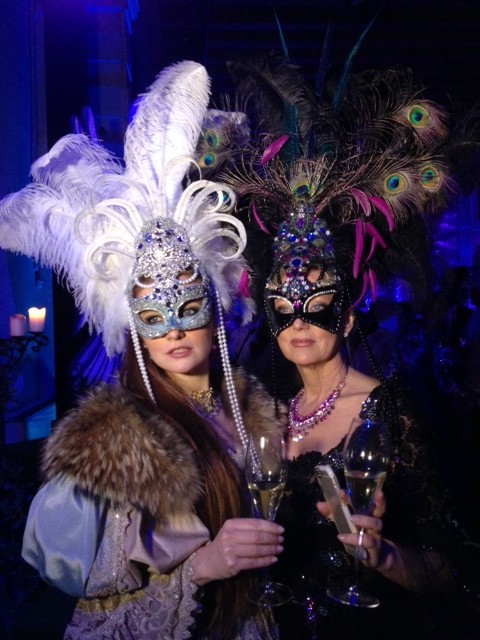
The Doge’s Ball – or “Il Ballo Del Doge” –is the brainchild of Venetian Antonia Sautter who in 1994 decided to expand beyond her work as a costume designer and create a ball that would attract people from around the world who wanted to fulfill their dreams. She wanted the ball to promote Venetian arts, culture and traditions.
Sautter works with a staff of roughly 400 people throughout the year to create what she calls a “magical dream” for her guests. She said she has many guests from Europe but also from Australia, Saudi Arabia, South Africa, and Brazil – noting that what is nice about the Doge’s Ball is “they can share in the dream no matter where they come from.”
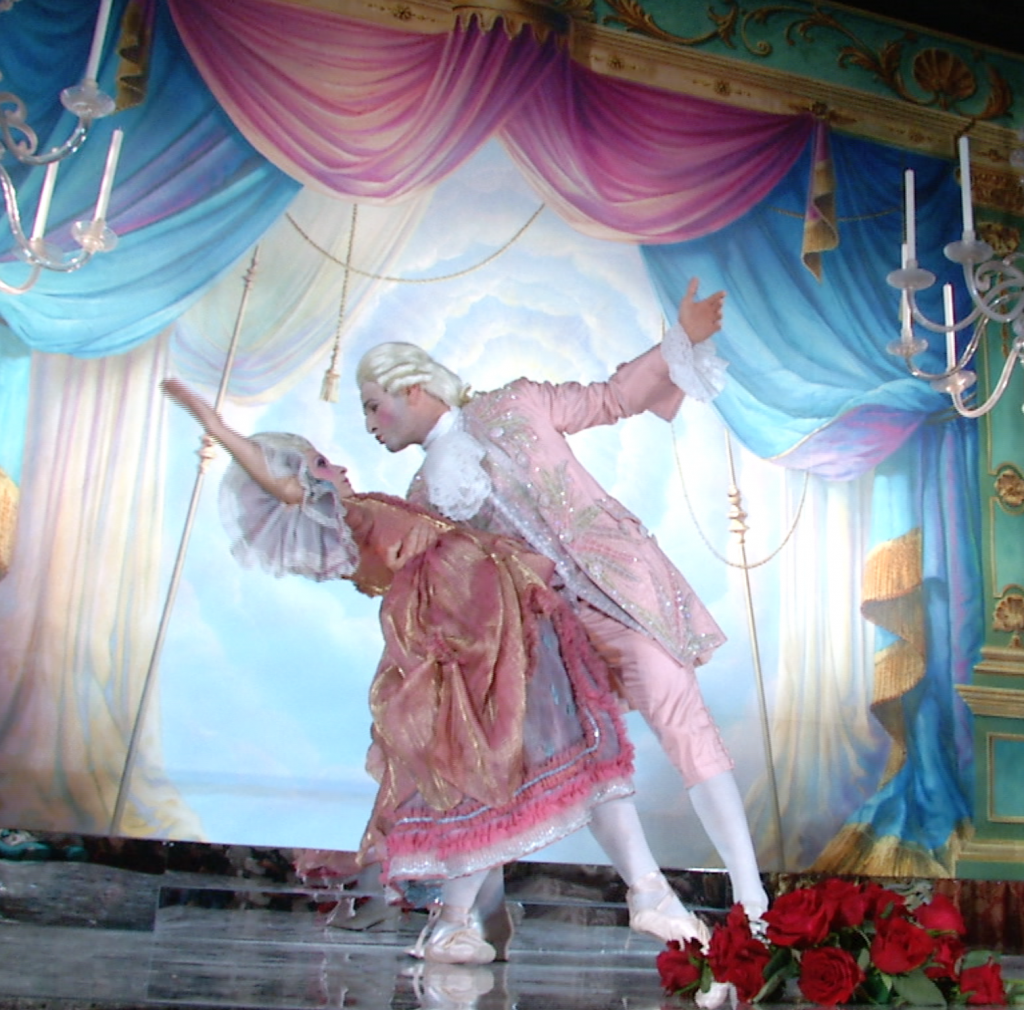
For this year’s carnival there are two Doge’s Balls – one on February 7th and another on February 14th – the theme this year is “Cupid in Wonderland.” The ball is an all night party that includes a variety of performances with dancers, singers, musicians and acrobats. The performers dig into Italian and Venetian traditions such as opera and the use of characters from Commedia Dell’Arte. In addition there are acrobats, giant butterflies on stilts, a dancing dwarf, and Eve La Plume a French Burlesque performer.
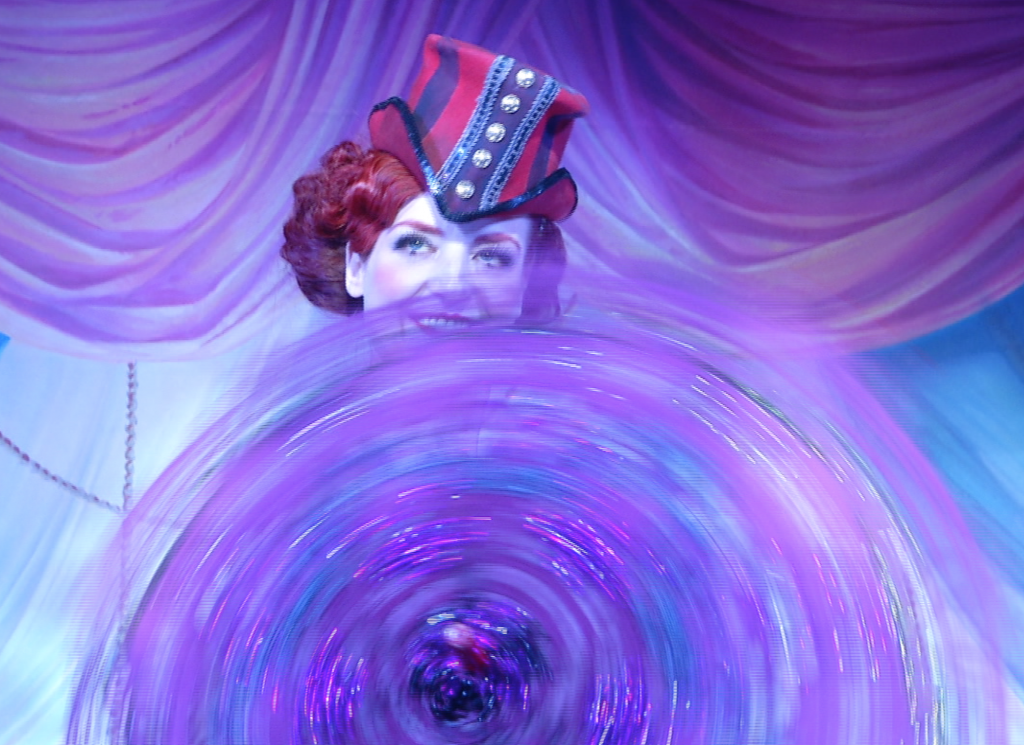
Getting to go to the Doge’s Ball requires money. Guests can pay up to 2500 Euros for a seat near the stage for the performances, and guests who want to come after dinner pay a reduced 800 Euro entrance fee. But the cost is not just the ticket to get in. Guests must come in sumptuous costumes and are encouraged to get them from the Sautter Atelier. Sautter obsesses over every detail of the costumes of her guests – the dress, the wig, the necklace, the fan and the gloves. Everything must be perfect for the Doge’s Ball.
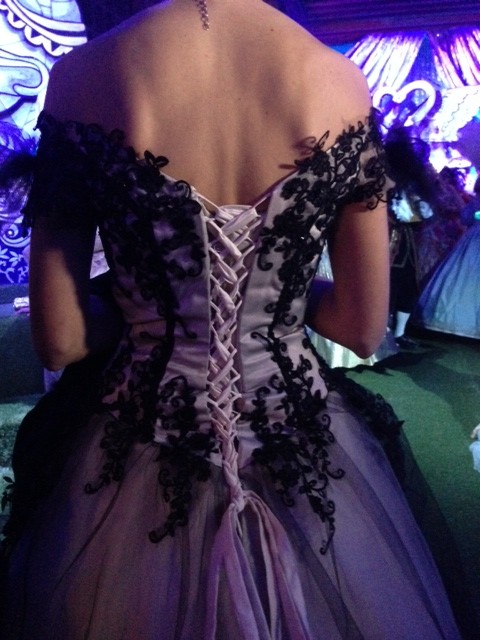
A magnificent costume can be rented for around 600 euros for the night, and the team for “Il Ballo Del Doge” will also do custom-made costumes starting at 1,000 euros and up. As Sautter explained, some customers have extravagant requests including real diamonds on their costumes, which makes the price rise dramatically. One woman once wanted a replica of a dress worn by Marie Antoinette that ended up costing 10,000 euros per meter.
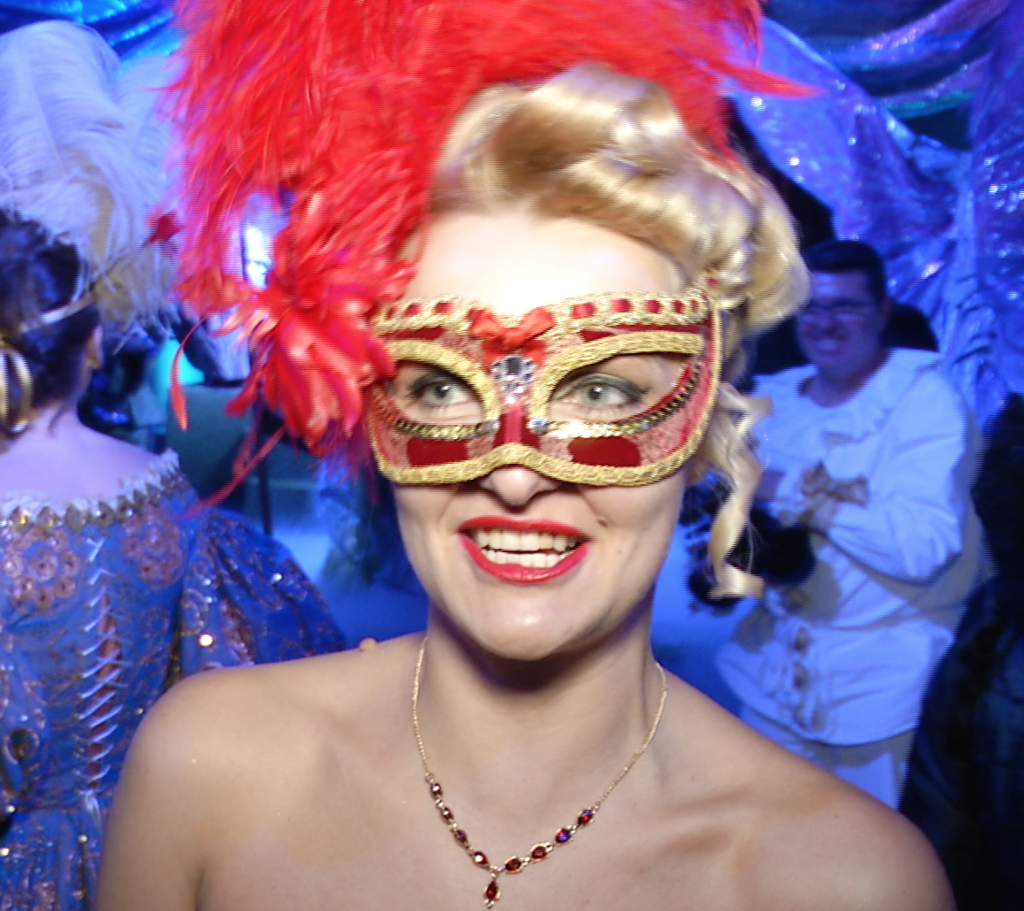
There are other items that push up the price as well. Guests in costume can hire their own make up artists and hairdressers to fix them up before the ball and photographers are available for a 300 euro photo session.
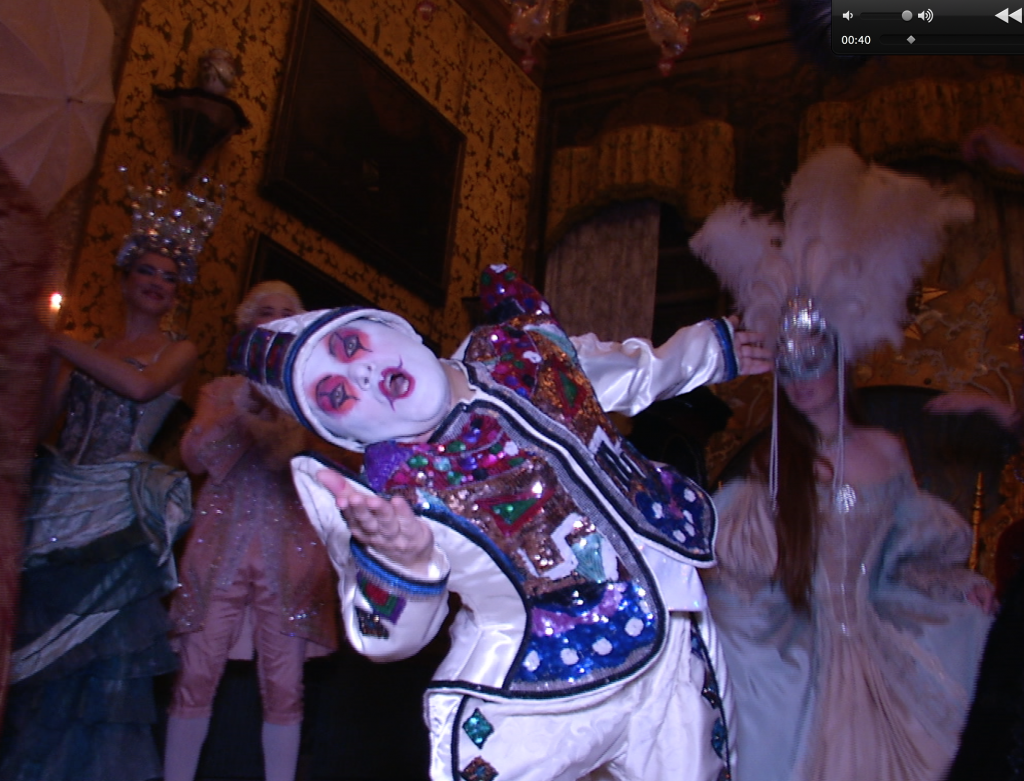
At the Ballo Del Doge, there were a group of entertainers from Commedia Dell’Arte, a form of improvisational theater that first developed in the Italian city of Naples in the 16th century and spread throughout Europe becoming popular in France and spreading up to England and even Russia.
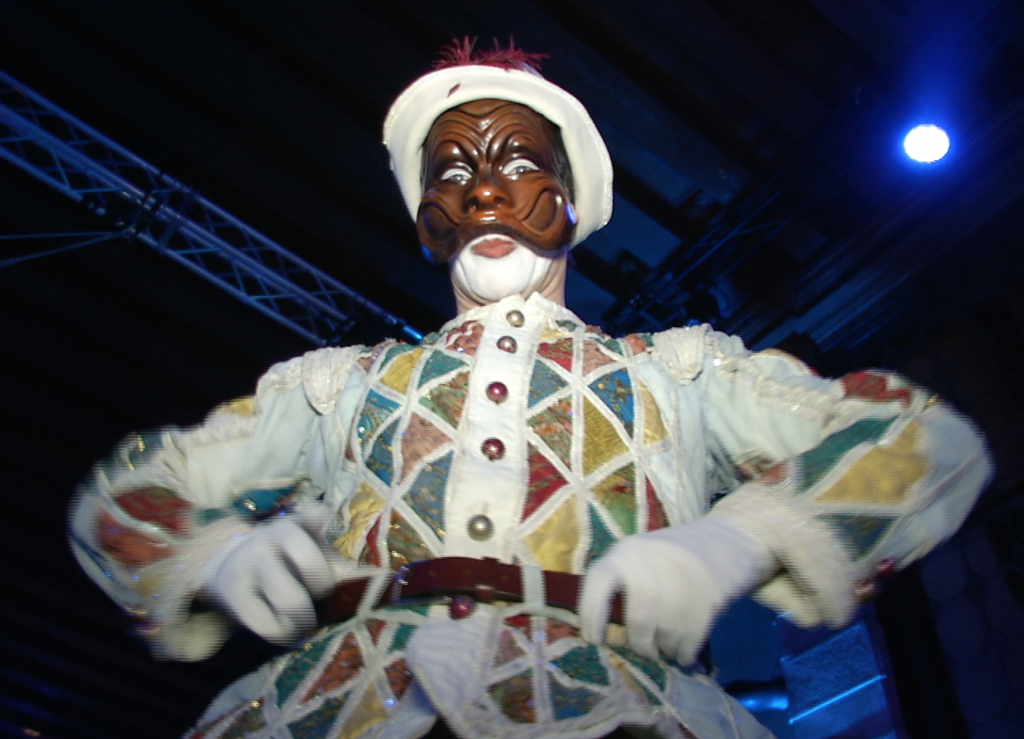
The Commedia Dell’Arte included a series of stock characters ranging from the most famous Pulcinella (Punch) dressed in white, with a white cone hat and black mask with a large nose and belly, and hunched back –to Harlequin, the silly servant dressed in white with diamond shaped decorations, and Colombina the clever servant girl. The stock characters are involved in a series of typical scenarios usually involving a frustrated love story and a happy ending.
In case the costumed revelers at the Doge’s Ball did not recognize them, the character in the white coned hat and black mask was Pulcinella and his companion was another stock Commedia Dell’Arte character, Il Capitano, a Spanish soldier full of bravado, eager to brag about his exploits, marching about with large, exaggerated steps.
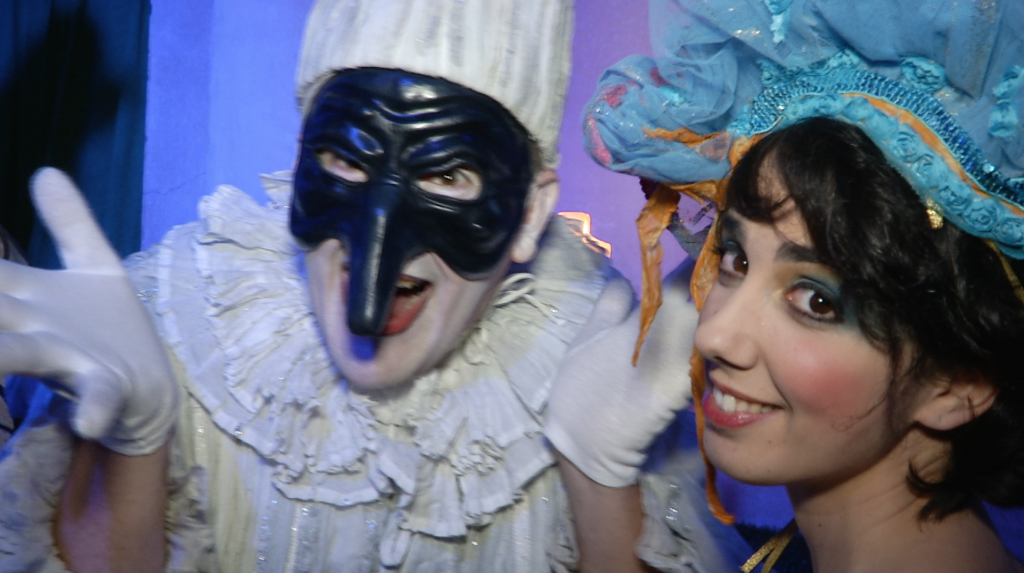
Most of the guests probably recognized the popular figure of Harlequin with his trademark diamond designs on his white outfit.
An important aspect of the Commedia dell’Arte is the mask and there are few places in the world where masks are made with the same techniques used centuries ago.
I felt lucky to find Gualtiero Dall’Osto, who is known as a “mascareri” in Italian, a Master Mask Maker who continues to make Commedia Dell’Arte masks at his workshop at the back of the “Tragicomica” mask store in Venice. As he works on preparing a Harlequin mask he explains the Harlequin figure is one of the “zanni” or the charlatans who make up the servants in Commedia Dall’Arte characters. Harlequin works for the miserly merchant Pantalone but is driven in life by his basic needs – his constant hunger and his love for the servant girl Colombina.
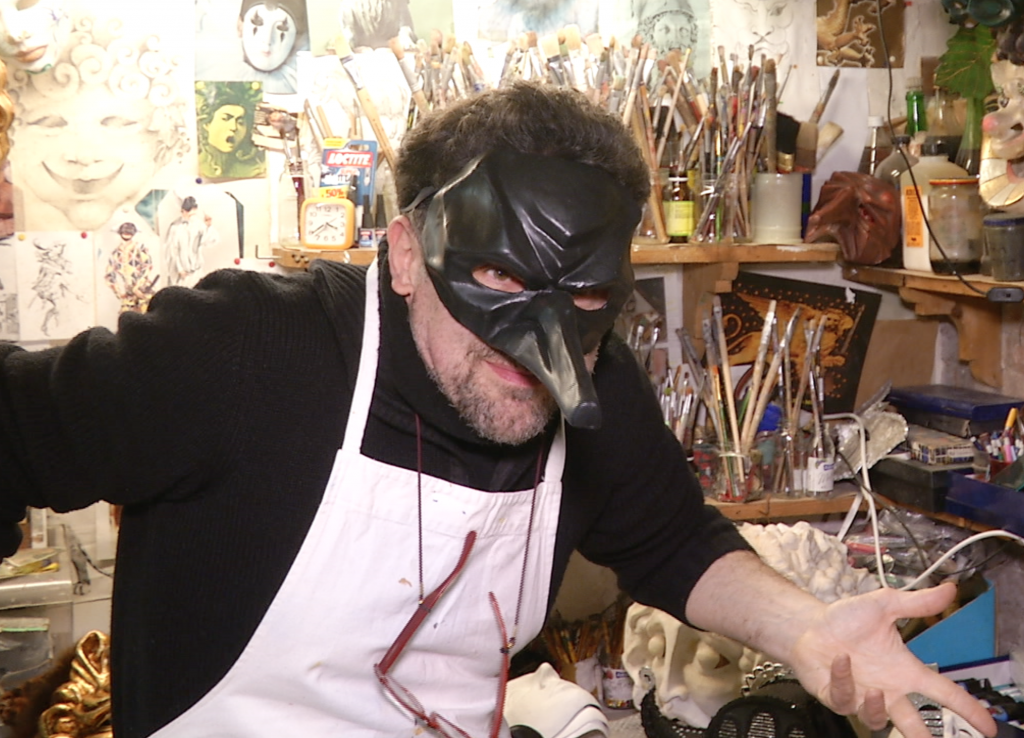
To make his masks, Gualtiero Dall’Osto studies historical documents and paintings – such as the Giambattista Tiepolo painting hanging in the “Tragicomica” shop. Then he works with the face of the actor who will use the mask making a drawing from each side and straight on taking into consideration the anatomy of the actor’s face. The next step is to make a clay sculpture of the mask. He then covers the clay sculpture with a plaster cast creating a “negative” shape. When the “negative” plaster shape is dry, he carefully pushes sheets of papier-mache’ into the gaps to create the mask.
Once hardened, Dall’Osto takes the mask out of the plaster cast and then cuts out the eyes, the nose and around the borders before painting it the correct color. Different characters in Commedia Dall’Arte are required to use different colors. For example, Pulcinella always wears a black mask. As a final step, the mask is given a wax polish.
Two popular female characters from the Commedia Dall’Arte – Smeraldina and Colombina – greeted guests at the door to the Doge’s ball and spent the evening flitting about acting silly. Smeraldina is the “foolish maid” in the Commedia Dell’Arte and Colombina is the clever and comic servant girl.
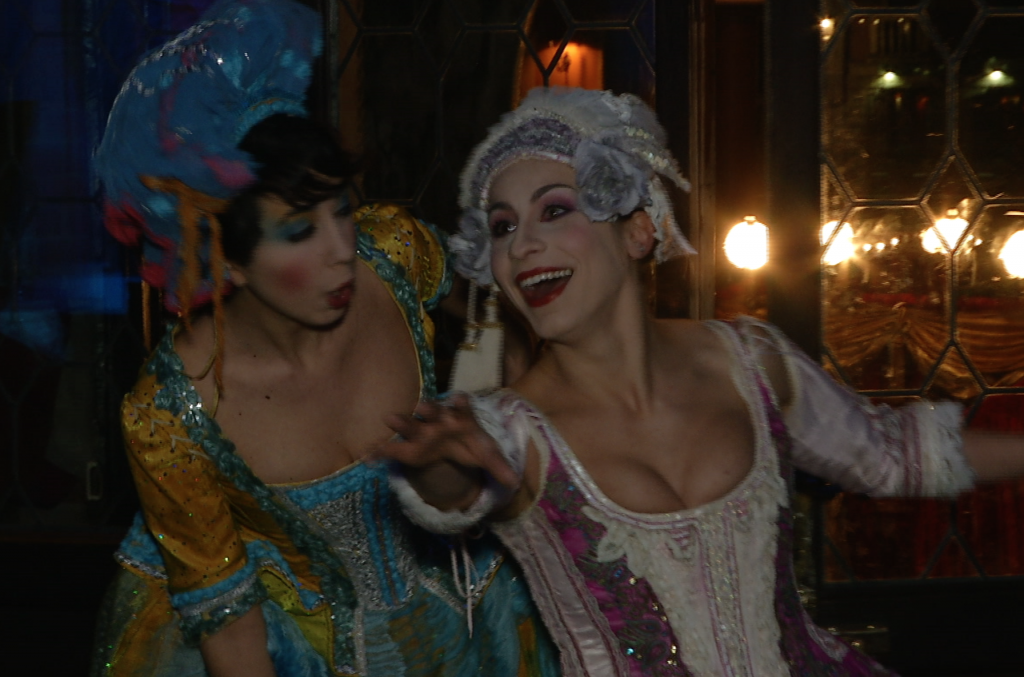
Another important figure in the Commedia Dell’Arte is Pantalone – the travelling merchant and employer of Harlequin. Gualtiero explains that Pantalone has a distinctive big and “decadent” nose. He is avaricious. His name comes from the Italian “pianta” (to plant) and “leone” (lion) because he plants the lion (the winged lion is the symbol of Venice) wherever he goes.
While the performers at the Doge’s Ball appeared to be goofing around, to the contrary, they were professional performers playing clearly defined roles invented centuries ago.
Speaking of goofy, that is what I look like in my velvet kaftan trying to talk to a woman dressed up as a table. She was telling me about her very heavy headdress.
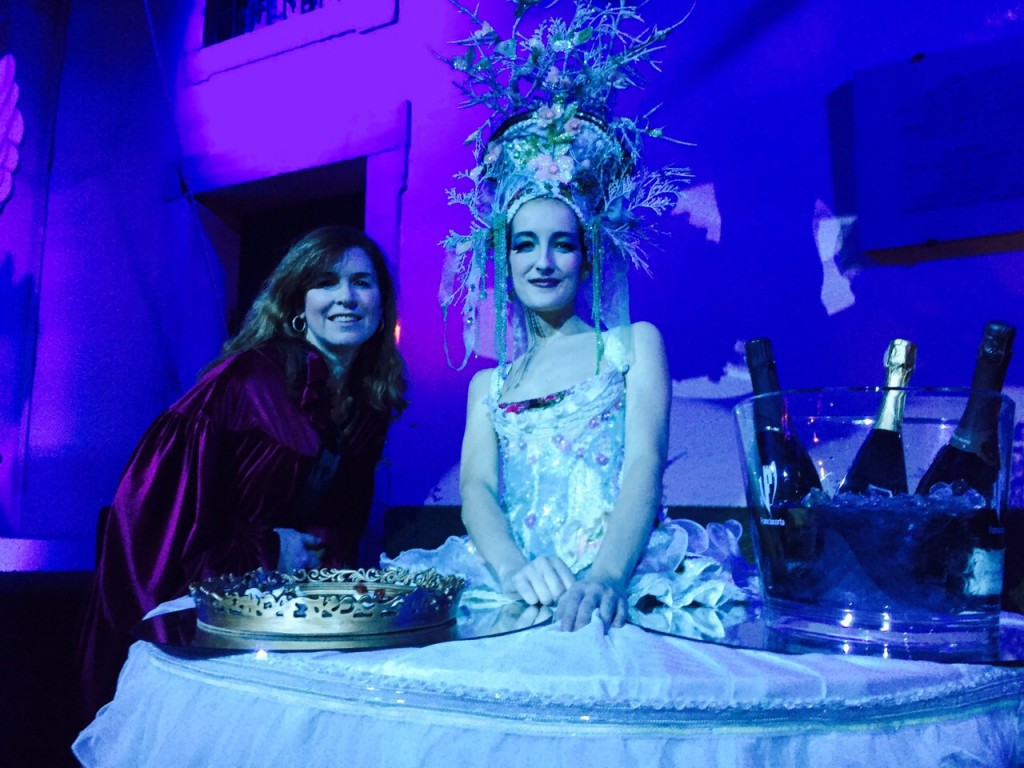
There is so much more to say about the Venice Carnival. We did a long feature on the “Fritole Veneziane” – a fabulous fried, sugar-covered donut-like sweet with warm raisins and pine nuts inside. For that we spent hours in the kitchens of the best pastry makers in Venice — the Rosa Salva Pasticceria. We spent hours running up and down from one end of the city to another, mostly on the Vaporetto water buses which always provided us amazing views of what must be the most beautiful city in the world.
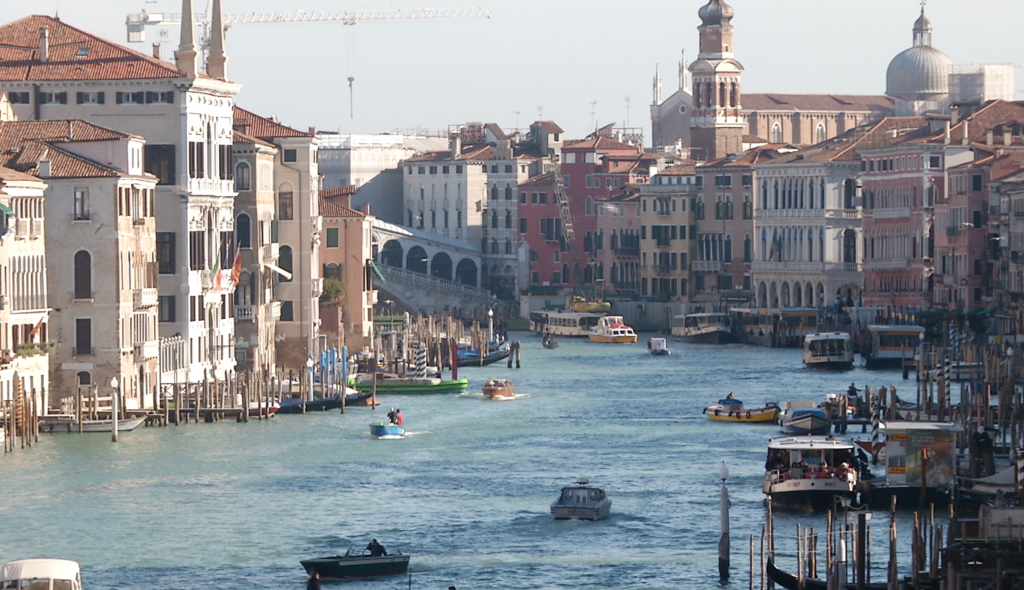

What a surreal experience — I wonder how the guest list is prepared, and how she finds people from around the world, although the super rich are an international bunch, it seems. Is there still a live Doge in Venice? Is it an elected position now? Is it a dynasty? When did the power of the Doge end – when, I guess I must be asking, did Venice come under the rule of Rome? I think of masked balls as very French, but I am now guessing the French copied the custom from the Italians – an interesting adventure in a world so, so, unlike the US, which likes constant exposure, and not masked identity.
Nancy — You always ask so many excellent questions and I would need to do some more research before I can give you a proper answer. Here are a few responses though — Antonia Sautter — the woman who runs “Il Ballo Del Doge” explained to me that she has a lot of returning guests to her Ball. She was very keen and eager for media attention because that is how she can attract more guests. I put a photo in the post of a Russian woman from St. Petersburg who said she simply learned about the ball on internet and booked her ticket on line. As far as the history of the Doge is concerned — they are long gone. They were the leaders of the Serenissima Republic of Venice (Serenissima — means very Serene) — which was a major sea power dominating the area from Venice down the Adriatic, along the Dalmatian Coast, into the Ionian and Aegean Seas. They were in frequent battles and wars with the Ottoman Empire for control of those areas. The first Doge was elected in the 7th Century and the last Doge fell with the Republic in 1797 at the hands of Napoleon. However, Napoleon signed an agreement with Austria giving them control over the city of Venice. Interestingly, you asked if there is a Doge now in Venice. No, the Doge’s are long gone — but the city could probably use one. The city is momentarily without a mayor who was forced to resign last summer after being implicated in a massive kickback scandal around the Mose project– a major public works project intended to save the city from high water. The project involves the building of massive floating flood gates that will float upwards and hold back high tides and protect the city. The Mayor and dozens of others were accused of embezzling millions of Euros intended for that project. While I was in Venice, many people mentioned to me this lack of leadership that they have right now.
what an amazing spectacle, especially for anyone who loves messing about with cameras. I’ve really enjoyed going backwards and forwards through the pics.
Thank you Alan. Unlike you, I do not use a proper camera for the photos for my posts. I just use my iphone. The reason being is that most of my posts come out of stories I am doing for work and I am already moving around with lots of equipment — microphone, cables, computer etc, so it would be too much to also carry a camera. I often think that I am getting great photos and then I see the video that the cameraman shot of the same thing with the zoom and it is so much better– so I often end up using the freeze frames of the video. Still, the Venice Carnival is a photographer’s dream!
I am one of those lucky persons who attended Venice university for undergrad and – despite the fact that January and February in Italy we had finals – Carnival was always my favorite part of the year. Of course I’ve never been able to go to the Doge’s ball, but the fritole are quite something (I warmly recommend Tonolo for them…)
Giulia — that is so funny that you mentioned the University of Venice Ca’ Foscari. We had an interview there with Professor Carmelo Alberti an expert on the history of performing arts who talked to us about Commedia Dell’Arte. I was so impressed by Ca’ Foscari. What a beautiful location!! I asked Prof. Alberti if they need someone to teach a journalism course. And since you mentioned Tonolo — we were staying in an AirBnb apartment just down the block from Tonolo and every time we passed by we saw the place was so packed with people you couldn’t get inside. In the window they had these plates piled high with Fritole con Zabaione. Finally Gigi — the cameraman I was working with– insisted that we face the crowd but we had to try the Fritole con Zabaione. Mamma Mia, they were delicious!!!
Hey there Trisha! Great post on Carnavale. You look fabulous, by the way. I don’t know about you, but I am always a little creeped out by Carnevale and some of the weird masks and outfits. There is just a bit of a nefarious feel about it that has always made me feel uneasy. The fritoli are wonderful, though!
Thank you Kay! No, I don’t get creeped out by Carnevale — I love all the weird and elaborate costumes. I also like the fact that so many people spend tons of money on fabulous costumes and then proudly walk about St. Mark’s Square posing for people to photograph them. No one asks for any money. I think that is cool.
A really fun post with lots of good and interesting information. Thanks! Loved all the pictures, but the last one of Venice looked like a stage set. Great scenery!
PS I’m really glad we got to see you “in costume.” You had me wondering.
A presto!
Didn’t that photo look like a stage set. I guess Venice is just one big stage set. Anyway, that photo was from the balcony of the University of Venice Ca’Foscari. We were interviewing a professor there and then took several shots from the balcony. It was a breathtakingly spectacular view. You can thank my Mom for the shot of me in the velvet Kaftan, she insisted that she wanted to see me at the Costume Ball. I actually looked pretty goofy.
Terrific explanation of Carnevale and its origins. I’ve had the good fortune to visit twice during Carnevale, and it was a photographer’s dream. The balls were beyond my reach however, and you confirmed it with the costs you spelled out. How lucky for you to get to be in the thick of it.
Hi Linda — It really his fun to be at Carnevale, and I do feel lucky to have been able to see one of the fabulous balls. However, I was there as a journalist — not all dressed up in one of the amazing costumes which would have been really cool. When I was leaving I met a documentary producer from Canada who had just arrived and was preparing a documentary of the Doge’s Ball. I think she was going to get a costume and do the whole thing as a participant. I will be eager to see her documentary when it comes out.
Hi Trisha,
fun post. What a ball! Must have been a ball to attend! I go to venice often but only once for Carnivale when our Venetian friends tend to vacate. Tonolo is a great place and glad you just forged in like good Italians. Actually when we did go for Carnivale a few years ago we stayed right there in our friend’s gorgeous Venetian flat next to the church of San Pantalone so Tonolo was our morning coffee stop. Loved the fact they dressed up too. keep on having fun and good luck with all you do, amazing Mamma!
Lucky you that you have a friend with a gorgeous Venetian flat. That city is just so magical — no matter whether it is carnival or not.